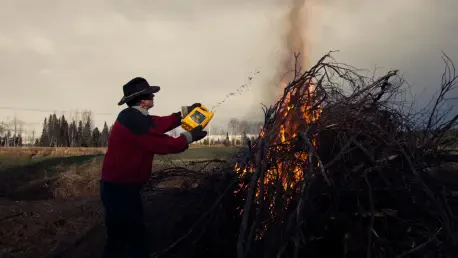The prevalence of wildfires has surged at an alarming rate, presenting an intricate challenge for the insurance industry. As climate change propels these natural disasters to new extremes, insurers face mounting pressure to find robust methods for wildfire risk management. In this analysis, the role of artificial intelligence (AI) in redefining insurers’ approaches is explored, highlighting innovative solutions such as those provided by ZestyAI.
Navigating the Wildfire Challenge: Essential Context
Understanding the evolving landscape of wildfire risk management for insurers is critical. Historically reliant on outdated models and static data, the insurance sector has struggled to keep pace with the increasing volatility of wildfire patterns. This inadequacy is compounded by recent legislative changes, such as Colorado’s HB 1182, which mandates increased transparency and accountability in risk assessments. These shifts underscore the necessity for advanced modeling techniques that can adapt swiftly to environmental changes and regulatory demands.
In-Depth Analysis of AI Innovations and Compliance
The integration of AI into wildfire risk management is gaining traction, with explainable AI models at the forefront. For insurers, these models offer an unparalleled level of transparency, aligning with regulatory requirements such as those stipulated by HB 1182. By using AI, insurers can provide clear explanations for how risk scores are determined and adjusted, giving policyholders insights into how mitigation efforts directly impact their premiums. This transparency is not only a regulatory necessity but also enhances consumer trust and engagement.
Community and Regional Collaborations: A Fine-Tuned Approach
AI-driven strategies are not limited to individual property assessments; they extend to community-level initiatives. By working closely with local governments and communities, insurers can incorporate broader mitigation efforts into risk models. However, the challenge lies in standardizing these approaches across diverse regions with unique characteristics, such as California’s distinctive climate and terrain. Successful collaborations between insurers and communities can serve as models for replication, reducing wildfire impact while meeting regulatory standards.
Projected Shifts and Economic Implications
As AI technology advances, several trends are poised to reshape insurance practices. Enhanced algorithms capable of real-time risk recalibration promise more dynamic and precise risk assessments. Economically, this evolution could lead to competitive pricing models, reducing costs for insurers and policyholders alike. Regulatory landscapes may continue to evolve, emphasizing transparency and integration of innovative tech in compliance processes. For insurers, staying ahead of these trends is crucial for maintaining a competitive edge and meeting legislative requirements.
Strategic Insights for Insurers
The findings underscore that proactive adaptation to AI-driven solutions is not only beneficial but essential for insurers. By enhancing risk modeling accuracy and transparency, insurers can foster stronger relationships with both regulators and policyholders. Engaging collaboratively with local communities and regulatory entities can further strengthen compliance and trust. Strategic adoption of AI and an openness to innovation will position insurers to mitigate wildfire risks effectively, safeguard policyholders, and thrive in an increasingly challenging landscape.
In conclusion, while the complexity of wildfire risk management for insurers has increased, so too have the opportunities for leveraging AI. The insurance sector’s proactive embrace of these technologies marks a pivotal step toward effectively reducing risks, ensuring regulatory compliance, and enhancing customer experiences. Through strategic planning and adoption of cutting-edge technologies, insurers prepare themselves to navigate the future with greater assurance and resilience.









